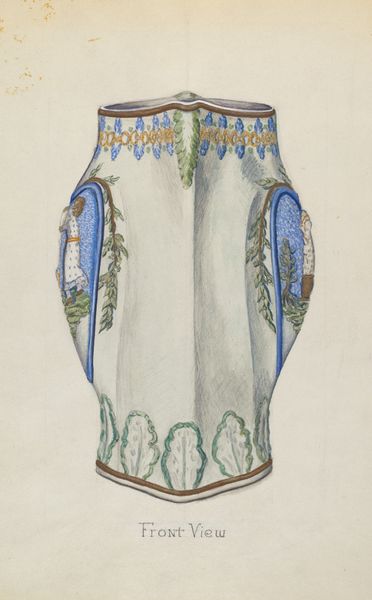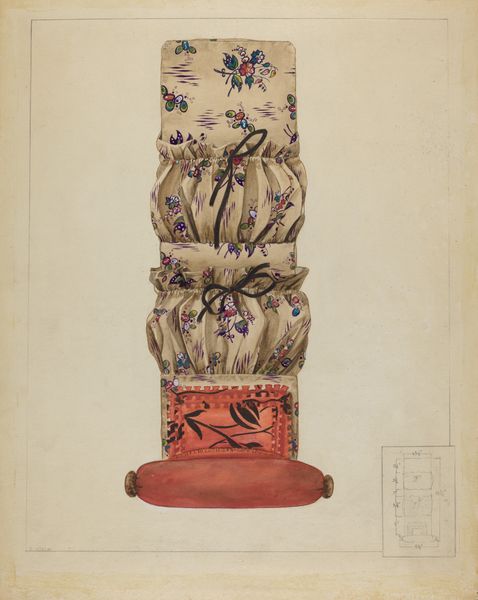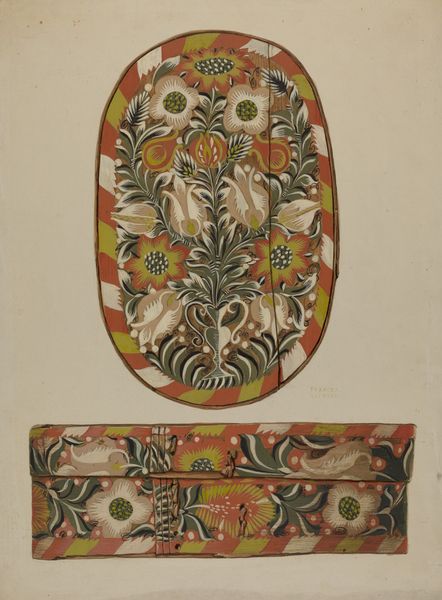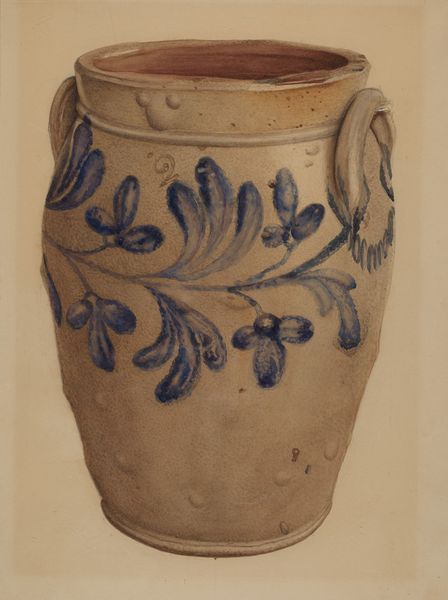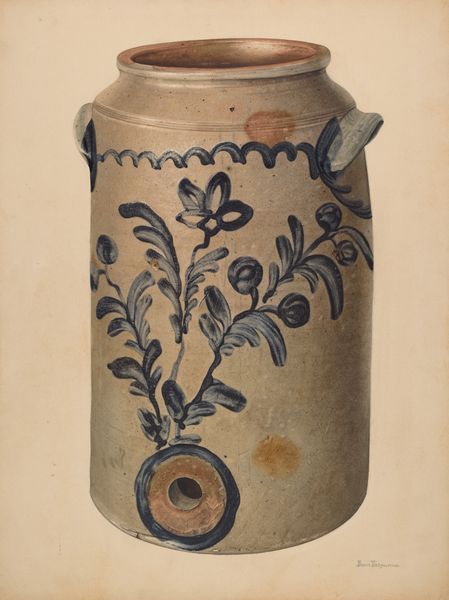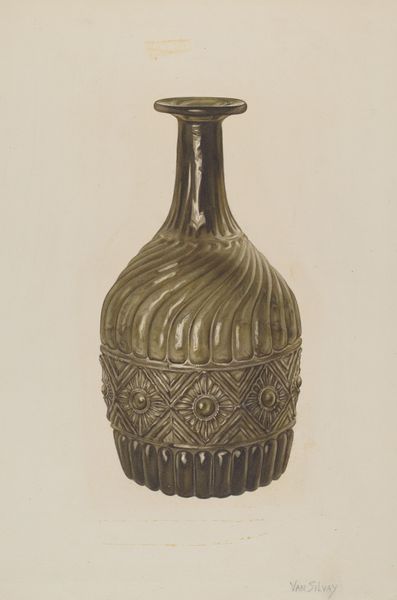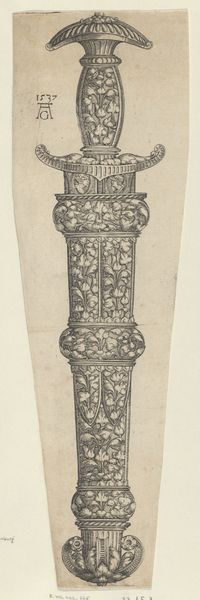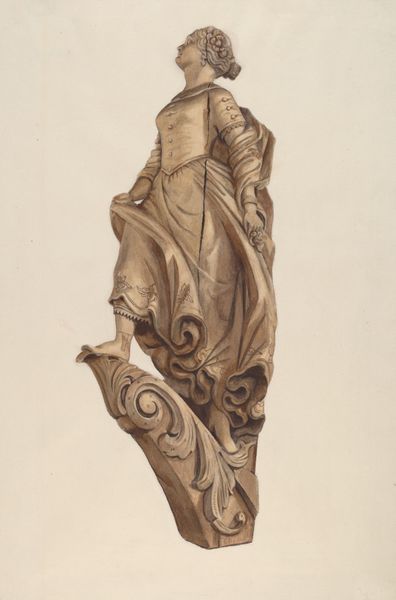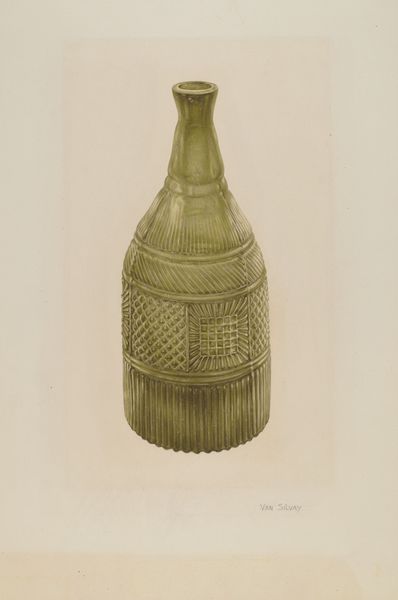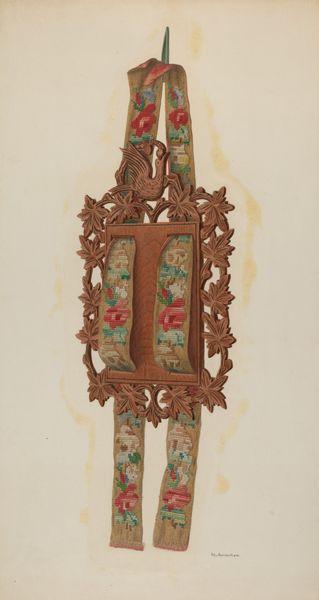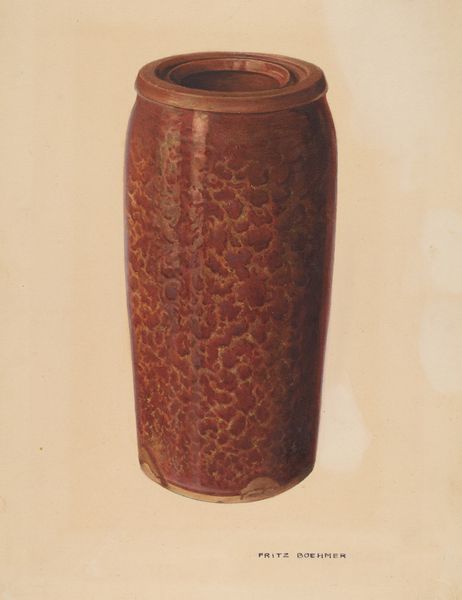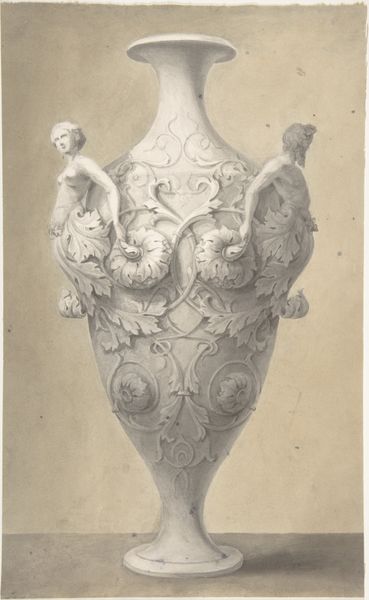
drawing
#
drawing
#
natural stone pattern
#
toned paper
#
possibly oil pastel
#
oil painting
#
coloured pencil
#
underpainting
#
pastel chalk drawing
#
watercolour bleed
#
watercolour illustration
#
watercolor
Dimensions: overall: 44.8 x 27.5 cm (17 5/8 x 10 13/16 in.)
Copyright: National Gallery of Art: CC0 1.0
Curator: Let’s discuss this drawing, “Mast Sheath,” created in 1937 by Lucille Chabot. It seems to be rendered with coloured pencils, perhaps with pastel chalk, on toned paper. Editor: My initial impression is one of elegant decay. The fluted, carved form suggests something grand, but the muted palette and the slight imperfections in the drawing hint at a story of time passing, and perhaps a little bit of abandonment. Curator: I agree about its evocation of grandeur and imperfection. The piece is compelling structurally. The composition has distinct, well-defined sections with the detailed carvings at the center acting as the focal point, drawing the eye downwards. The forms present a vertical rhythm, giving a sense of monumental architecture. Editor: Given the title, I'd wager this depicts a mast sheath, a component from a ship’s structure. Considering that maritime industries faced massive transformations with steel replacing wood in shipbuilding during the late 19th and early 20th centuries, it could suggest an artifact symbolizing obsolete tradition. Perhaps Chabot is documenting what she views as fading craftsmanship. Curator: That reading resonates with the visual qualities. Observe how the textures contrast. We have a detailed and ordered cross-hatching near the top followed by organic and somewhat chaotic flourishes around its midsection, further reinforced through an elaborate leaf design wrapping toward the base. Each part of its section speaks a different language in material and technique. Editor: Considering that the work was produced during the Great Depression, it could also reflect on themes of lost livelihoods and the nostalgic look back to better days. Public art programs in that period often portrayed scenes of labor, or documented the changing American landscape, making artwork that romanticized traditional crafts common. Curator: You make an excellent point about context. It enriches my view of its texture and composition. Looking again at the ornate details in the carving, and juxtaposing it to the more simple, straightforward sections, it reflects a tension between decoration and utilitarian design. Editor: Right, and by stripping the image of all color except shades of sepia and faint gold highlights, the artist directs us toward ideas like endurance and perhaps an ambivalent form of progress. Curator: It’s fascinating how analyzing the forms leads to considering socio-historical interpretations. Editor: And, conversely, seeing how socio-historical events inform the compositional choices, we realize its beauty lies in its silent commentary.
Comments
No comments
Be the first to comment and join the conversation on the ultimate creative platform.
